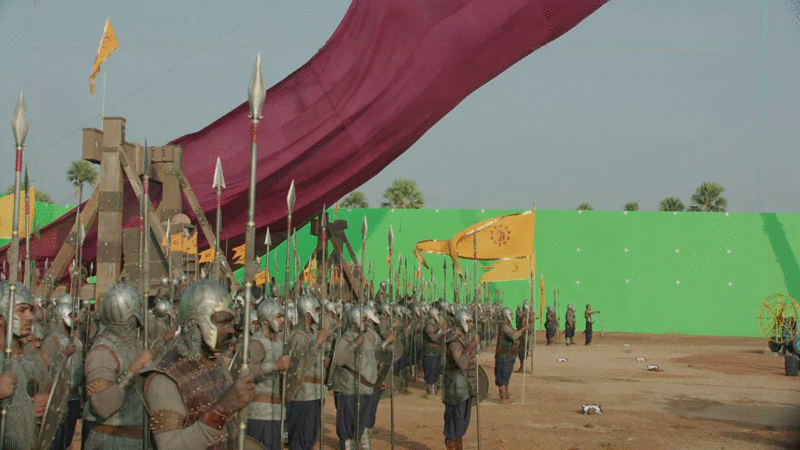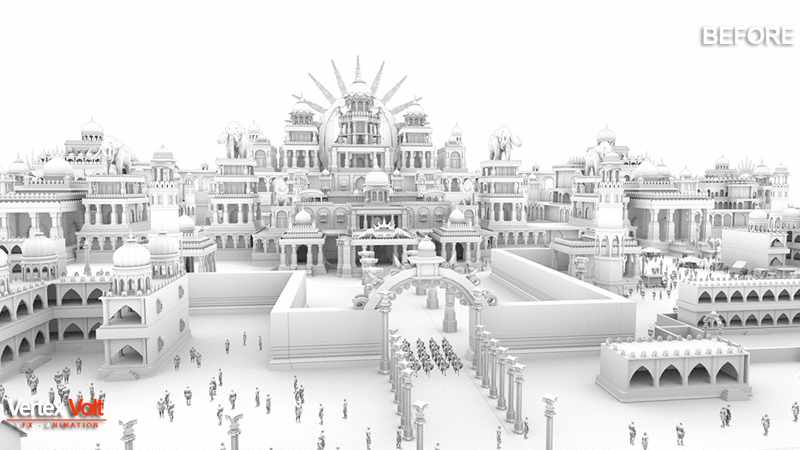The year 2015 saw many filmmakers in Indian cinema (mostly Bollywood), using visual effects heavy sequences in their movies to tell their stories to the audience. Among the biggest of them were SS Rajamouli’s Baahubali – The Beginning and the recently released Sanjay Leela Bhansali’s Bajirao Mastani.
Apart from the two magnum opuses mentioned earlier there were also a few other movies that deserve a mention. Some filmmaker’s attempted to explore the realm of visual effects to attain the desired results to live their dreams; few of those were movies like I, Hawaizaade, Detective Byomkesh Bakshi, Bombay Velvet and Manjhi – The Mountain Man.
Visual effects has for long been more of an afterthought for filmmakers and producers, but that attitude is slowly changing and more content creators are exploring how VFX can benefit their product. Earlier, VFX supervisors and producers were involved in the project only at the post stage and were never asked for their advice on how they believe a particular sequence could be shot. Filmmakers and content creators have a more inclusive approach toward VFX artists nowadays; just to cite a small example, we all were amazed at the way SS Rajamouli treated the epic (nearly 30 minutes long) war sequence, but not many know that if weren’t for the advice of the VFX supervisors from the Hyderabad based Firefly Creative Studio, the final war would have been fought in a dark and gloomy atmosphere as against in broad daylight as they felt that for the character of Baahubali to win a battle in a dark and gloomy ambience wouldn’t have done justice to his persona. These are small creative decisions, but go a long way in vesting more confidence in the VFX team and their sensibility of understanding cinema as well.

Lately, it has also been observed that primetime television shows across Hindi general entertainment channels (GECs) have increasingly grown to embrace the use of visual effects to add grandeur and take viewers into different worlds. What was once a luxury that could only be afforded by the silver screen, has slowly made its way into the daily lives of the TV audience!
Star Plus, Zee TV, Sony, &TV, Life OK and SAB have launched more and more shows that require the proficient use of VFX for adding better aesthetic quality to video production. Some of the prominent shows which have done well on the small screen in the recent past include:
Chakravartin Ashoka Samrat, the historical show airs Monday-Friday at 9:00 pm on Colors, and takes viewers into the journey of Emperor Ashoka. The show has seen a steady growth in its viewership and uses a lot of set extensions, crowd multiplication and animation to support the story. The long series has its VFX provided by Contiloe Productions, which is also creating the show for Colors. One of the special aspects is a CG lion that is present throughout the series.
Maharakshak Devi, in continuation to its Maharakshak series, Zee TV lined up Devi to proceed after Aryan. The 26 episode series is a contemporary take on social evils that have roots in mythology. Vertex Volt continued providing VFX for Devi after its stint with Aryan. Each show requires about 250 VFX shots which include chroma shots, 3D modeling, 2D animation and matte paintings. Devi also has a CG tiger in it for the first two episodes which took over 40 days for creation.

Apart from these two, the shows which have recently caught everyone’s fancy are the recently launched Star Plus’ Siya Ke Ram, for the first time Valmiki’s version of the mythology was seen on the small screen through this show, which is Ramayana through the eyes of Sita. The series has roughly 15 minutes of CG in every episode and involves loads of visual effects for creating set extensions; crowd multiplication and entirely 3D rendered shots and compositions to give the perfect desired output; once again delivered by Vertex Volt.
Another series that is doing wonders for Colors is Naagin, which boasts of some amazing CG work on its leading lady Mouni Roy. Pixellence is the VFX studio that’s delivering the work for this fictional tale of revenge. And more recently fresh promos of a new show called Janbaaz Sindbad have hit the small screen that retells the adventurous tales of the brave sailor who travelled across the seven seas overcoming various hurdles along the way.
Finally, loads of creative and advertising agencies are also investing heavily in creating videos and other forms of interactive messaging with the use of not only visual effects, but also exploring newer technology like virtual reality and augmented reality.
The past year has certainly set some benchmarks in terms of use of visual effects across screens. And the coming years will definitely witness a lot more experimental techniques being used to deliver stronger stories. Here’s hoping for a bigger, better and brighter future for the VFX industry in the coming years.

